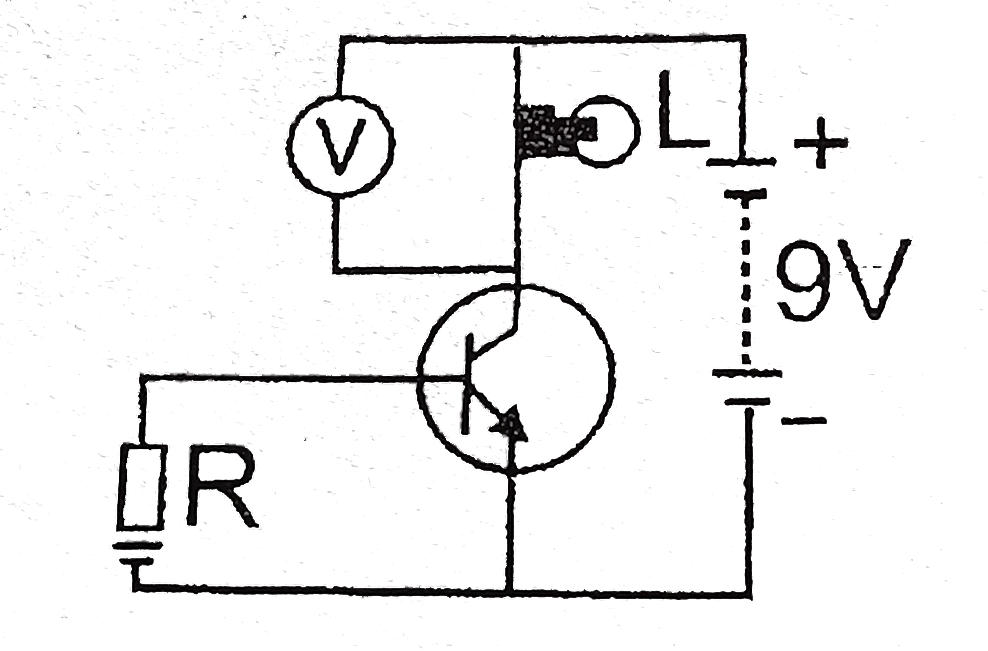A nuclear fusion reaction is given by
.1H2+.1H2→.1He3+.10n+Q(energy).
If 2 moles of deuterium are fused, then total released energy is
(a) In a nuclear reaction, the sum of the masses of the target nucleus (.21H) and the bombarding particle (.21H) may be greater the product nucleus (.32He) and outgoing neutron .10n. So from the law of conservation of mass-energy some energy (3.27MeV) is evolved due to mass defect in the nuclear reaction. This energy is called Q-value of the nuclear reaction.
(b) Density of the nuclues=mass of nucleusVolume of nuclues
Mass of the nucleus=Aamu
=A×1.66×10−27kg
Volume of hte nucleus =43=πR3=43π(R0A1/3)3=43πR30A
Thus, density =A×1.66×10−27(43πR30)=1.66×10−27(43πR30)
Which shows that the density in independent of mass number A.
Using R0=1.1×10−15m, we get
density =2.297×1017kgm−3

Topper's Solved these Questions
- BOOK - RESONANCECHAPTER - ATOMIC PHYSICSEXERCISE - Advanved level problems17videos
ATOMIC PHYSICS
- BOOK - RESONANCECHAPTER - ATOMIC PHYSICSEXERCISE - Exercise-2 Part-III : Comprehension12videos
ATOMIC PHYSICS
- BOOK - RESONANCECHAPTER - ALTERNATING CURRENTEXERCISE - HIGH LEVEL PROBLEMS11videos
ALTERNATING CURRENT
- BOOK - RESONANCECHAPTER - CAPACITANCEEXERCISE - High Level Problems16videos
CAPACITANCE
Similar Questions
The deuterium-tritium fusion reaction (called the D-T reaction) is most likely to be the basic fusion reaction in a future thermonuclear fusion reactor is
.21H+.31H→.42He+.10n+Q
(a) Calculate the amount energy released in the reaction, given m(.21H)=0.014102 amu. m(−(1)3H)=3.016090 amu, m(.1n0=1.008665 amu and m(.42He)=4.002603 amu.
(b) Find the kinetic energy needed to overcome coulumb repulsion. Assume the radius of both deterium and tritium to he approximately 1.5×10−15m.
(c) To what temperature must the gases be heated to initiate the fusion reaction? Take Boltzmann constant k=1.38×10−23JK−1.View SolutionCalculate the energy released in joules and MeV in the following nuclear reaction:
.1H2+.1H2→.2He3+.0n1
Assume that the masses of .1H2, .2He3, and neutron (n), respectively, are 2.40, 3.0160, and 1.0087 in amu.View Solution
Knowledge Check
- Question 1 - Select One
The process, 1H2+1H3→2He4+0n1 represents the types of reaction known as
ANuclear fissionBNuclear fusionCArtifical disintegrationDTransmutation of element - Question 2 - Select One
A nuclear fussion reaction is given below :
.1H2+.1H2→.2He3+n+3.2MeV
How much energy will be generated when 2 kg of deuterons are fused :A1030eVB5×1023MeVC1022MeVD1033eV - Question 3 - Select One
The nuclear reaction .21H+.21H→.42He is called
Afission reactionBfusion reactionCchain reactionDthermal reaction
In fusion reaction .1H2+.1H2→.2He4+Q
Find the energy released while binding energy per nucleon for deuterium is 1.12 MeV and for helium nucleus is 7.07 MeVView SolutionThe equation .3Li6+.1H2→2.2He4+ energy represents
View SolutionThe source of energy of stars is nuclear fusion. Fusion reaction occurs at very high temperature, about 107. Energy released in the process of fusion is due to mass defect. It is also called Q-value. Q=Δmc2,Δm= mass defect.
In a nuclear reaction
.1H2+.1H2→.2He3+.0n1
If the masses of ._(1)H^(2)and._(2)He^(3)are2.014741and3.016977aμ,respectively.thentheQ-value of the reaction is nearly.View SolutionIn the nuclear raction given by .2He4+.7N14→.1H1+X the nucleus X is
View SolutionAssuming that about 20MeV of energy is released per fusion reaction .1H2+.1H3→.0n1+.2He4, the mass of .1H2 consumed per day in a future fusion reactor of powder 1MW would be approximately
View Solution

